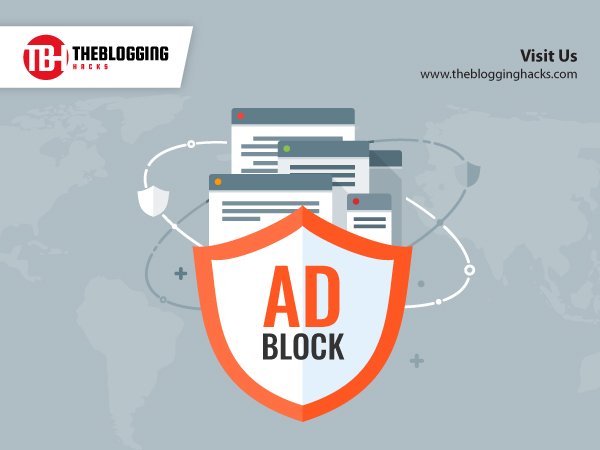Ad-blockers are popular among users because they help remove intrusive or annoying ads, speed up the loading of web pages, and improve privacy and security by blocking potentially malicious ads and tracking scripts.
However, their use can impact the revenue of websites that rely on advertising to support their content and services. Do the Ad-blockers pose bleak effects for marketers or are we simply mistaken? Let’s find out!
Globally 42.7% of internet users used ad-blockers in 2022, as shown by Backlinko statistics.
Indonesia is leading the chart for countries engaging in ad-blockers, followed by India.
What are Ad- Blockers?
Ad blockers are software applications that remove or filter out unwanted ads on web pages. They work by using a set of rules or filters to identify and block ads based on various criteria, such as the type of ad, its source, or its content. Ad blockers can be browser extensions, standalone software applications, or built into browsers.
How Ad-Blockers Work?
Ad blockers use different methods to block ads, including blocking HTTP requests to ad servers, hiding ad elements on a web page, or removing scripts and styles used to display ads. They typically come with a pre-built set of filters or rules that can be updated by the user or by the provider of the ad blocker.
From a marketing perspective, the use of ad blockers can have a significant impact on your marketing strategy.
How Ad-Blockers Can Impact Your Marketing Efforts Negatively:
Reduced Visibility
Ad-blockers may prevent a significant portion of your target audience from viewing your ads, reducing their visibility and effectiveness.
Decreased Conversion Rates
Users who do not see your ads are less likely to engage with them or convert into customers.
Increased Costs
If your marketing strategy heavily relies on online advertising, using ad-blockers can significantly impact costs. You may need to invest in alternative marketing channels or develop new ad formats that are less likely to be blocked.
Negative Impact on Brand Image
Intrusive ads or random pop-ups can annoy the users, which can have adverse effects on your brand image and reputation.
Although viewed in a bad light, ad blockers also have the potential to do some good for digital marketers.
Benefits of Ad-Blockers for Marketers:
Improved Ad Quality
Ad-blockers can encourage digital marketers and advertisers to create more relevant, less intrusive ads. It can lead to higher engagement rates and more conversions for advertisers.
Increased Focus on User Experience
Ad-blockers can encourage digital marketers and advertisers to prioritize user experiences, such as faster load times, better design, and more relevant content.
Shifting to Alternative Marketing Channels
Ad-blockers can push digital marketers and advertisers to explore alternative marketing channels, such as influencer marketing, content marketing, or email marketing, to reach their target audience.
Enhanced Privacy and Security
Ad-blockers can help protect users from potentially malicious advertisements and tracking scripts. It further improves the overall security and privacy of the online advertising ecosystem.
In addition, digital marketers and advertisers can also embrace ad-blockers as an opportunity to re-evaluate their marketing strategies and embrace new approaches that are more effective and efficient. By embracing new technologies and channels, they can reach their target audience with substantial influence and achieve better results.
Considering the adverse effects, there are ways to address the impact of ad blockers on your marketing strategy.
Leading Digital Marketers Suggest Some Ways to Avoid Ad-Blockers:
Develop User-Friendly Ads
Focus on creating ads that are relevant, valuable, and engaging to users. This can help reduce the number of users who install ad-blockers and improve the effectiveness of your ads.
Get Whitelisted for Acceptable Ads
Adblock Plus has listed some “acceptable ads standards” with which marketers can show ads to Adblock users. These guidelines require websites to follow advertising placement, differentiation, and sizing guidelines.
The “acceptable ads standards” restrict websites to only text and image advertising. Advertising with moving images or videos is not permitted. As a result, revenue suffers because publishers are unable to access these high-paying ad formats.
Invest in Anti-Ad-Blocking Technology
There are several anti-ad-blocking technologies available to assist you in bypassing ad-blockers and reaching users who have them installed. TechCrunch statistics make it clear that about 30.5% of the top 10,000 websites use anti-ad-blocking scripts and plugins. This may be the best short-term solution for ad blockers.
WordPress website owners can install paywall subscription offers, which are pretty easy to implement with WordPress plugins.
Foster Good Relationships with your Audience
Build strong relationships with your audience by engaging with them and providing them with valuable and relevant content. This can help reduce the need for intrusive ads and improve the effectiveness of your marketing efforts.
Concluding Thoughts
To summarize, ad-blockers can have a significant impact on your marketing strategy, but there are ways to mitigate the aftermath while still reaching your target audience. You can continue to market your products and services effectively by creating user-friendly ads, utilizing alternative marketing channels, investing in anti-ad-blocking technology, and cultivating positive relationships with your target audience.

